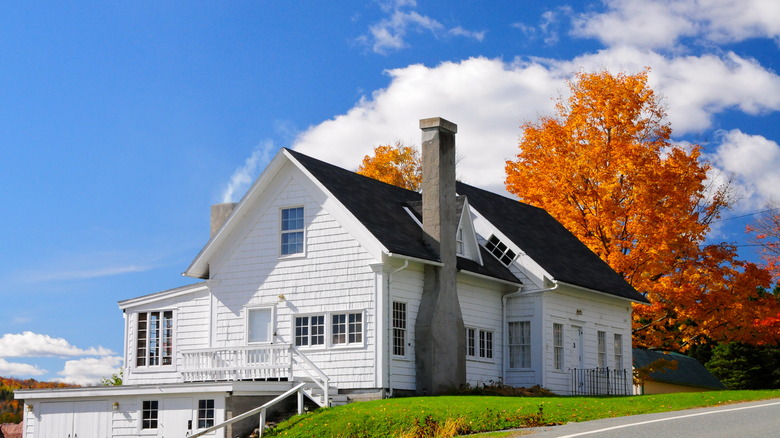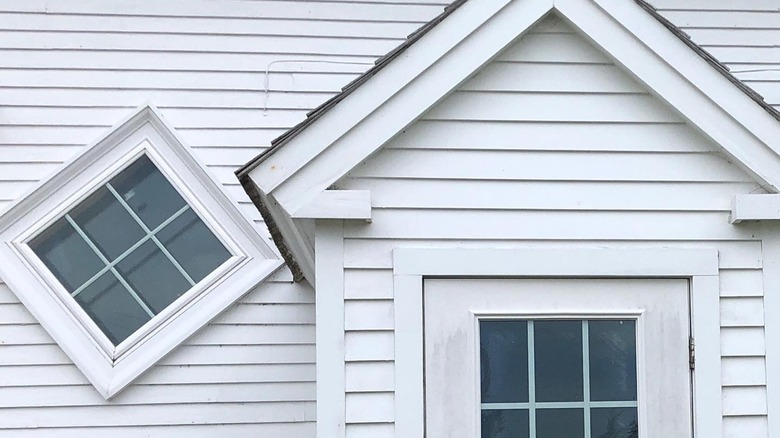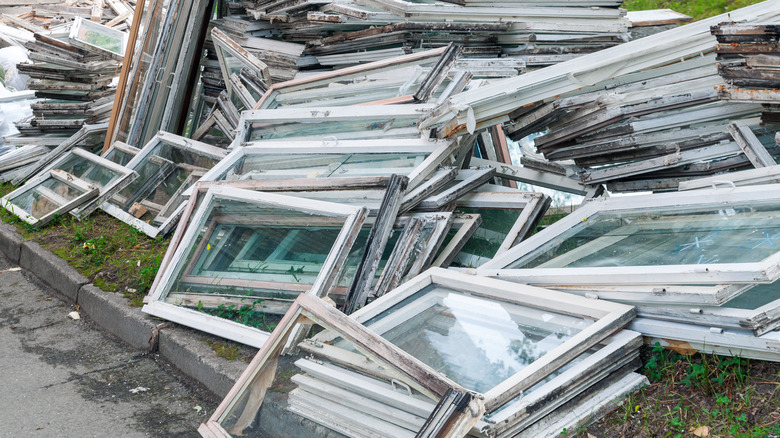What It Means If You See A Home With A Diagonal Window
New inhabitants and travelers in the New England states may find the number of diagonally oriented windows tucked along rooflines surprising as they survey the beautiful historic homes and farmhouses. Usually, on the second story of gabled houses, these unique windows stand out for their odd orientation, particularly since they look like a vertical window placed diagonally rather than one designed to be placed at an angle. They are prevalent in the state of Vermont, where they are often called "Vermont windows," "crooked windows," "lazy windows," and perhaps most intriguingly, "witch windows."
The supernatural association of the windows is based on the lore that witches cannot fly at a diagonal angle. They would, therefore, be tripped up and unable to enter through a window placed on a slant. This fun idea was crafted by local legend to explain the commonality of the unique architectural element that has increased over the past two centuries. They are also occasionally called "coffin windows," said to be used to remove coffins of the deceased from the second floor by sliding them down the roof. While witches and coffins seem like fantastical and spooky explanations, these windows and their placement have more practical and functional explanations.
Light and air flow
These strange diagonal windows are usually found on the second story, often at a point where a higher-pitched roof that accommodates a second story meets a lower roofline. Typically double-hung rather than single-hung and oriented at a 45-degree angle, they often look strange in a home where the rest of the windows are standard. These lower single-story rooflines, however, were often remodeled, and home additions added to the original structure in a time of constant building and community growth.
Because the new addition would displace the existing windows on one end of the home, they took away valuable light from the interior of the second floor. The remaining space would usually not be high enough to accommodate a fully upright window. In an era without electricity, this light needed to be salvaged somehow, so adding a window even at a slant would grant a few hours more usable light in upper rooms. This could be accomplished by turning a window the same size as the now-lost window on its side. In addition, you could still open it like a standard window for fresh air, a factor significant during non-air-conditioned New England summers.
Recycling and reusing
While the problem of the addition would necessitate a replacement window, New Englanders were very much into humble lives that reused and recycled everything. Therefore, a perfectly usable window removed while making the house larger would be saved and repurposed elsewhere. Even if using it that way looked a little odd from the outside, it saved money and materials. In addition, because the manufacture and transport of materials was much slower before the Industrial Revolution, double-hung windows were often the only options for retaining a large window.
Using their leftover windows made the fix not an uncommon sight among early New England houses, so soon it proliferated a given design trend that can be found all over, particularly in Vermont and Massachusetts, among older homes that have been added on to. Eventually, legends of witches and the burial of the dead entwined with practical aspects of New England construction during the American's early days. These stories provided a far more whimsical reason than simple recycling and frugality.



